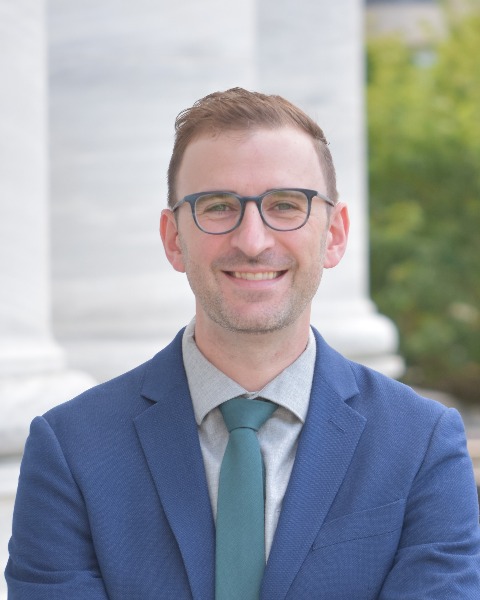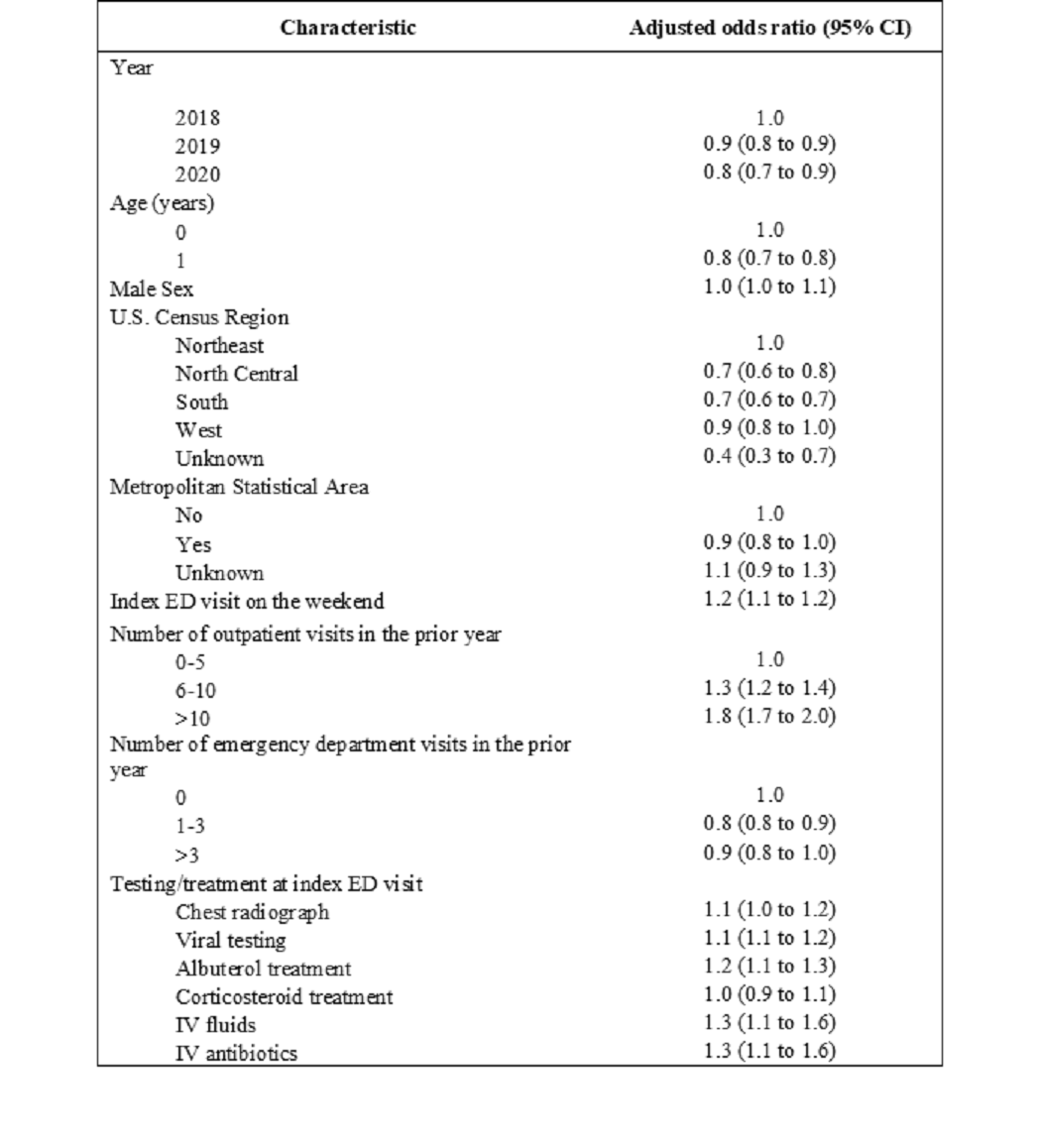Emergency Medicine: All Areas
Emergency Medicine 2
37 - Outpatient follow-up visits and hospital reutilization after emergency care for bronchiolitis
Publication Number: 37.111

Daniel J. Shapiro, MD (he/him/his)
Clinical Fellow
Boston Children's Hospital
Boston, Massachusetts, United States
Presenting Author(s)
Background: Outpatient follow-up after discharge from the emergency department (ED) is widely recommended to reassess the clinical trajectory and reincorporate patients into the medical home. However, follow-up visits may also have undesirable consequences such as missed work and school, financial costs, infection transmission, and medication overuse. The value of routine follow-up visits for children discharged from the ED with acute bronchiolitis is not known.
Objective: To describe the frequency of post-discharge follow-up visits for children with bronchiolitis and to assess for an association between outpatient follow-up and ED revisits, hospitalizations, and use of non-recommended testing and medications.
Design/Methods:
Using national insurance claims data from the IBM MarketScan Commercial Claims and Encounters database between 2018 and 2020, we described the frequency of outpatient follow-up within 7 days of ED visits for bronchiolitis in children less than 2 years of age. We performed mixed effects logistic regression models to evaluate characteristics associated with follow-up visits and to assess whether follow-up visits were associated with use of non-recommended testing (chest radiographs, viral testing) and medications (albuterol, systemic corticosteroids, systemic antibiotics). We performed multivariable Cox proportional hazards models to assess for associations between outpatient follow-up and (1) ED revisits and (2) hospitalization.
Results:
Outpatient follow-up occurred after 50.4% (95% CI: 49.7-51.2%) of ED encounters for bronchiolitis (N = 18,967). Younger age, greater frequency of outpatient encounters in the year prior to the index ED encounter, and Northeast region were positively associated with follow-up visits. (Table 1). Outpatient follow-up was not independently associated with ED revisits without hospitalization (adjusted hazard ratio 1.0, 95% CI: 0.8-1.2) but was positively associated with hospitalization (adjusted hazard ratio 1.5, 95% CI: 1.2-1.8). Use of non-recommended tests and treatments was frequent after follow-up visits (Table 2), and follow-up visits were independently associated with increased use of any non-recommended test/medication during the illness episode (adjusted odds ratio 2.2, 95% CI: 2.0-2.5).
Conclusion(s):
Outpatient follow-up visits after ED visits for bronchiolitis are common. The lack of association with subsequent ED revisits and the greater use of medications and testing in this group raises questions about the clinical value of routine outpatient follow-up for children with bronchiolitis..png)

